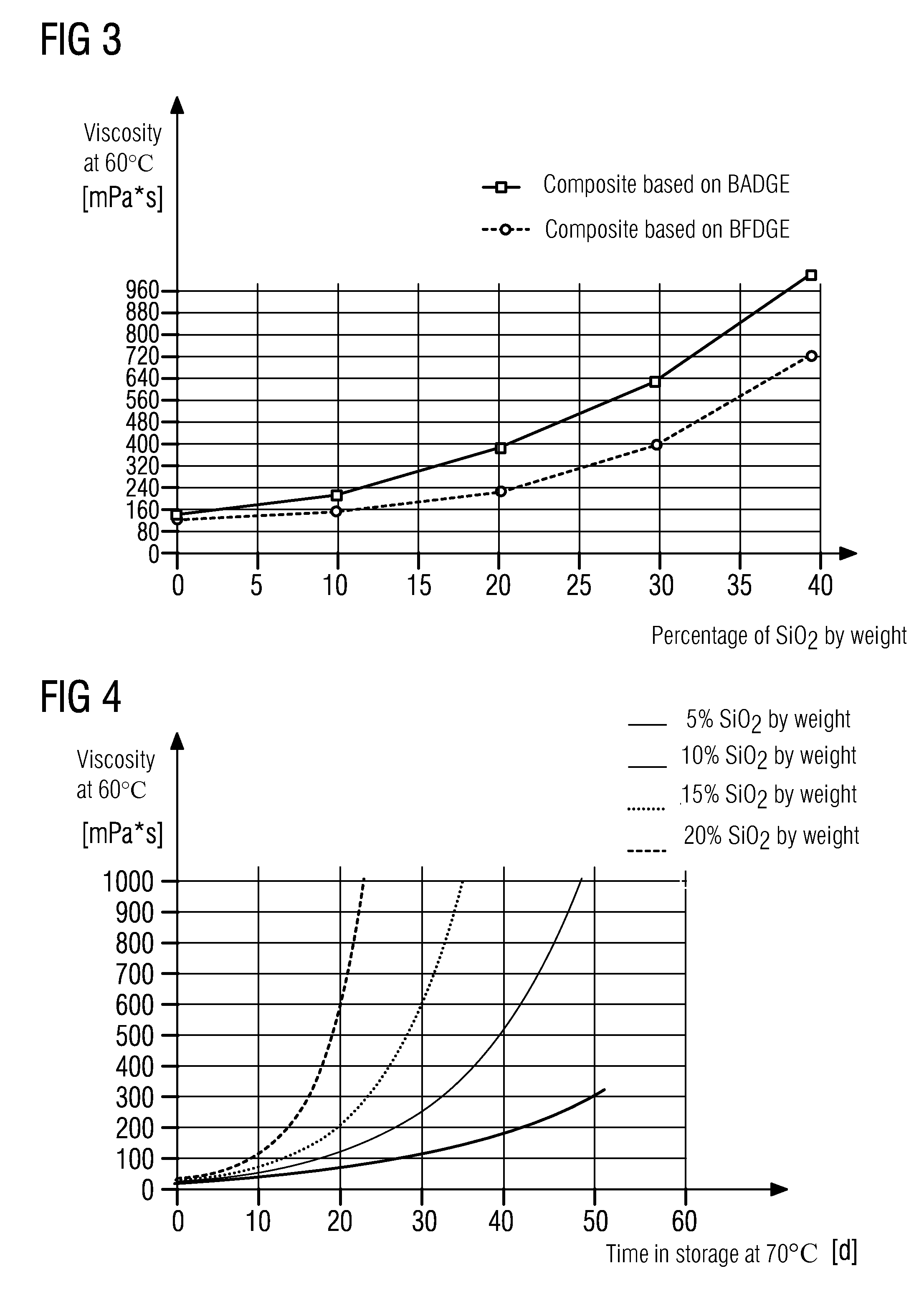Insulation for rotating electrical machines
a technology for electric machines and insulators, applied in the direction of organic insulators, plastic/resin/waxes insulators, etc., can solve the problems of increasing the viscosity of mica, increasing the difficulty of thoroughly impregnating resin, and electric breakdown of insulators, so as to increase the service life, and improve the effect of insulators
- Summary
- Abstract
- Description
- Claims
- Application Information
AI Technical Summary
Benefits of technology
Problems solved by technology
Method used
Image
Examples
Embodiment Construction
Exemplary embodiments
[0031]The potential of nanotechnology is shown in the use of nanoparticulate fillers in combination with the insulating materials currently employed based on mica. The life of sample bodies used for the trial, which correspond in reduced form to the prior art in terms of insulated copper conductors in stators of hydro-electric or turbo generators, is for that purpose measured under an electric field load until electric breakdown occurs. Because the insulating system's electric strength endures over several decades under an operational load, the continuous electric tests are performed at electric field strengths several times normal. The graphic below shows the mean values of the electric life of in each case seven sample bodies at three different field loads for in each case a standard insulating system (mica) and an insulating system having a nanoparticulate filler (NanoIso).
[0032]FIG. 1 shows the life curves for high-voltage insulating systems that are non-fil...
PUM
| Property | Measurement | Unit |
|---|---|---|
| grain size | aaaaa | aaaaa |
| weight | aaaaa | aaaaa |
| volume | aaaaa | aaaaa |
Abstract
Description
Claims
Application Information
 Login to View More
Login to View More - R&D
- Intellectual Property
- Life Sciences
- Materials
- Tech Scout
- Unparalleled Data Quality
- Higher Quality Content
- 60% Fewer Hallucinations
Browse by: Latest US Patents, China's latest patents, Technical Efficacy Thesaurus, Application Domain, Technology Topic, Popular Technical Reports.
© 2025 PatSnap. All rights reserved.Legal|Privacy policy|Modern Slavery Act Transparency Statement|Sitemap|About US| Contact US: help@patsnap.com


